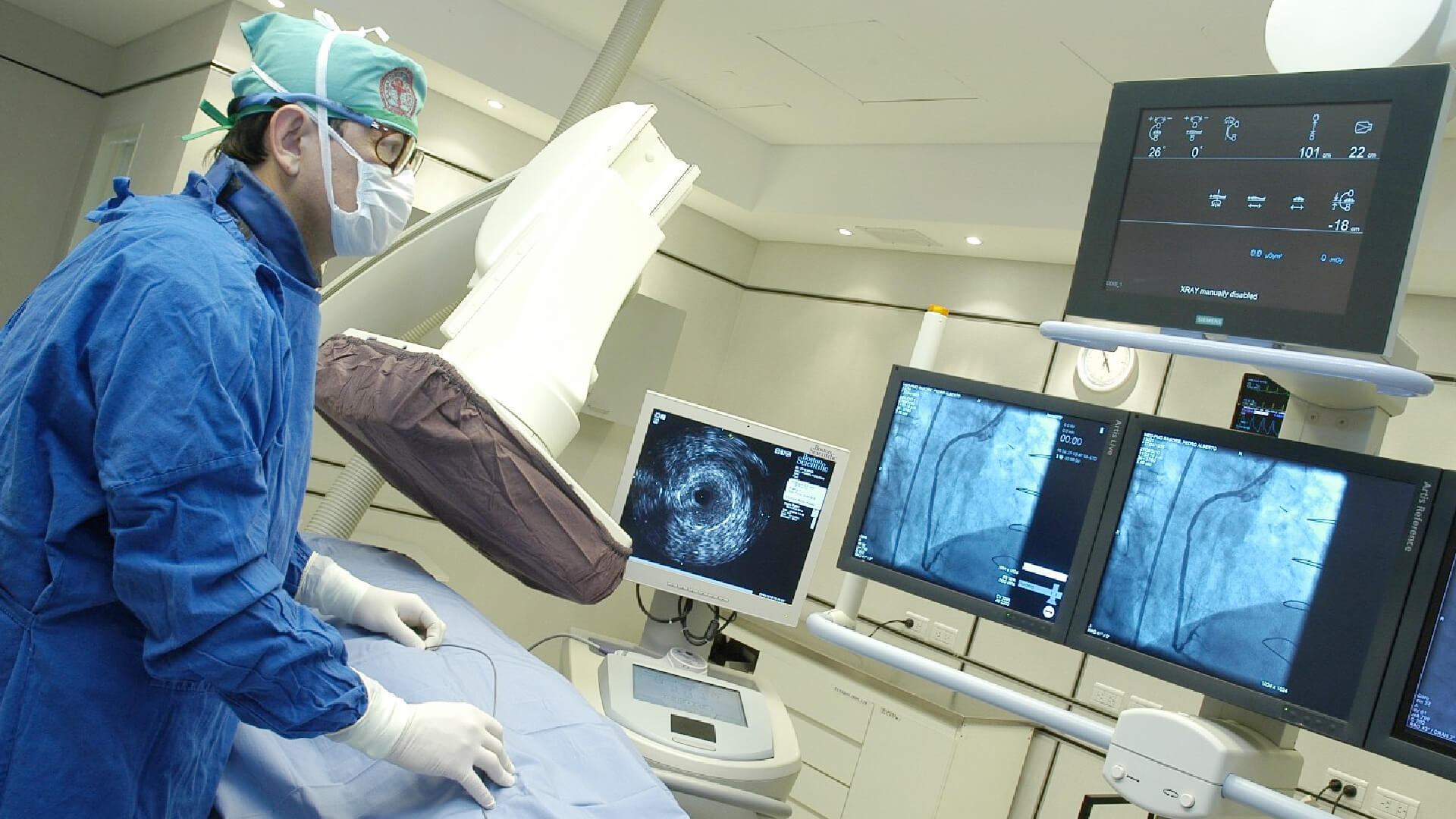Always at the forefront, Hospital CIMA Hermosillo puts at your disposal the Hemodynamics unit, the first at a private level in the entire state of Sonora, where a trained and highly experienced medical team performs studies, diagnoses, and procedures related to heart conditions such as catheterizations and angioplasties.
Our INNOVA IGS 530 Hemodynamics unit has a multipurpose system designed to support a variety of interventional vascular procedures, from neurological to peripheral examinations. It also has the ability to give the pronounced angulations required for coronary angiograms. Developed with specifically requested, advanced, and implemented applications, you can plan, guide, and evaluate cardiac procedures from a touch of the remote control to easily measure injuries with self-calibration. Peripheral studies with specific specifications, as well as Innova bréeze and Innova Chase.
Catheterization
Coronary angiography is an invasive diagnostic method with which we can know the anatomy of the coronary arteries, the pressure within the heart, as well as its function. The procedure is simple and safe when performed by trained personnel and with the proper equipment. Coronary angiography is performed under local anesthesia and a puncture in the radial artery (hand) or groin (femoral artery) and through this route very thin catheters are introduced, which are plastic tubes that, following the path of the abdominal and thoracic aorta, reach up to heart level. At this site, the catheters are brought into the coronary arteries and a contrast medium is injected, which is visualized by X-ray on a monitor. With this procedure, it is possible to identify the anatomy of the coronary arteries, their distribution and the internal diameter with which they can identify occlusions or sites of narrowing. The images are recorded from different angles so that the coronary arteries can be seen as clearly as possible. Subsequently, the catheter is exchanged for one that measures the pressure for this is done by injecting about 30 ml. of contrast medium inside the heart with which the silhouette is drawn and its mobility is evaluated. The information provided by coronary angiography is very important to identify the type and severity of coronary artery disease, and thus give a prognosis of the disease and allows us to plan the treatment that most benefits our patient, as well as the type of physical activity that will be possible. perform.
Angioplasty
Coronary angioplasty is a dilation procedure at the site of an arterial narrowing with the aim of increasing the diameter and improving blood flow. The procedure is carried out with a special catheter (guide catheter) through which a balloon is introduced that when inflating the obstructive atherosclerosis plaque, fat, cholesterol, etc. Rather, when the balloon catheter is inflated, it fractures and squeezes against the wall of the artery. Usually at the site of the dilation we implant a small metal tube in the shape of a pen spring called a Stent or endovascular prosthesis in order to increase the chances of keeping the artery open.


